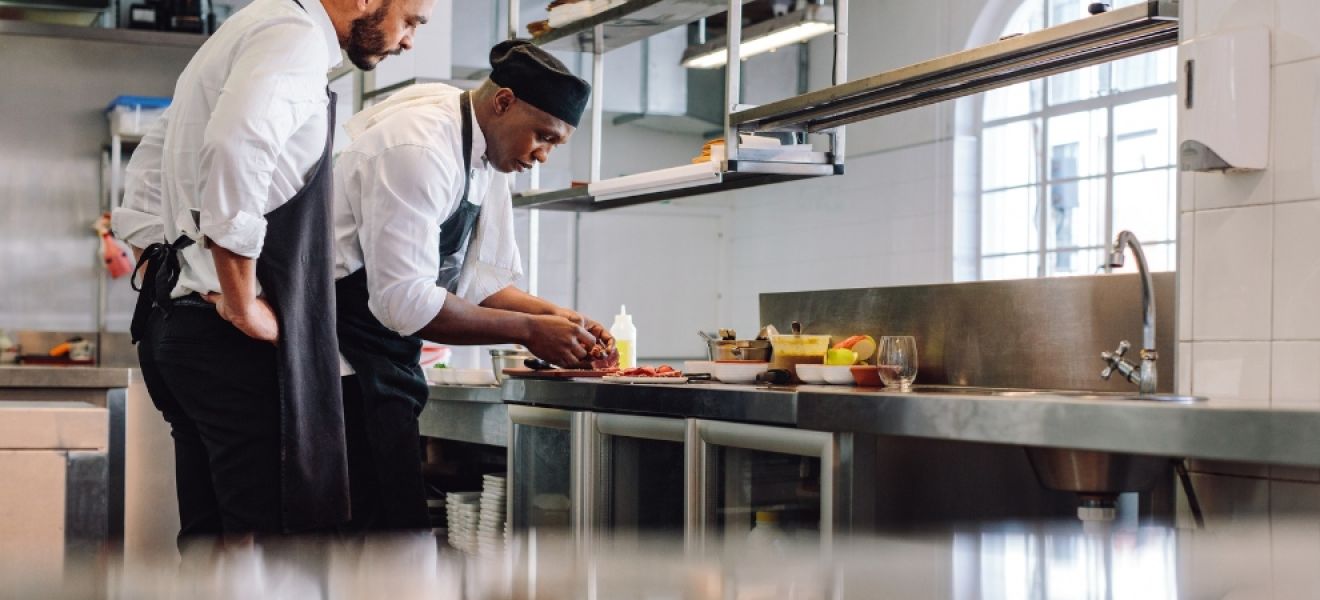
How to Train Kitchen Staff on Proper Equipment Hygiene
If you run a commercial kitchen, you already know it’s not the food that gets you shut down. It’s the filth. Grease build-up. Rusty kit. Mouldy seals. Nine times out of ten? It’s not laziness - it’s a lack of training.
Showing your team how to clean properly isn’t just about avoiding fines. It keeps the kitchen running, cuts downtime, and makes gear last longer. Most importantly, it protects your customers.
Here’s how to make sure your staff know what clean actually means - and how to do it right.
Start With the Why
Don’t assume they already know. Explain it.
Dirty kit can lead to breakdowns, failed inspections, and food poisoning. There’s nothing abstract about it - Environmental Health Officers don’t give out second chances when your fridge smells like wet socks or your dishwasher’s clogged with grime.
Make the stakes clear from day one.
Define What ‘Clean’ Looks Like
“Give it a wipe” won’t cut it. Staff need to know:
• The difference between cleaning, sanitising, and disinfecting
• Which products to use where (don’t bleach the slicer…)
• How often each job gets done - and why it matters
Train them to spot dirt, not just respond to it. Smells, streaks, limescale, mystery stains - they’re all signs of something going wrong.
Break It Down By Kit
Every piece of equipment has its quirks. Generic instructions won’t help anyone. Be specific:
• Ovens & grills – Pay attention to fans, grease traps, trays
• Fridges & freezers – Seals, drain holes, coils, air vents
• Small appliances – Slicers, mixers, toasters - show how to strip down safely
• Dishwashers – Often ignored, yet used more than anything else
If your team keeps complaining about cloudy glasses or funky smells coming from the machine, point them to this practical guide on cleaning commercial dishwashers.
Make SOPs Visual (and Obvious)
Don’t bury cleaning instructions in a folder nobody reads.
Put laminated checklists by every station. Use icons or photos if needed. Colour code the cloths and bottles. Create a simple rota - daily, weekly, monthly - and keep it visible. Not fancy. Just clear.
The HSE’s guidance on cleaning in the workplace is worth looking at if you’re setting up a new routine.
Put It in the Induction - Not Just on the Wall
A new pot wash isn’t going to read the handbook. You’ve got to walk them through it.
• Show them how to clean every bit of kit
• Let them do it with supervision
• Get them to sign off once they’re confident
They won’t just “pick it up” by watching. That’s how mistakes happen.
Top It Up With Refreshers
Even your most experienced chefs will let things slip now and then.
Hold short hygiene refreshers every couple of months. Pick one piece of kit and do a 10-minute demo. Use any recent fails as teaching moments - no blame, just fix it.
And if you’re ever in doubt, check back against FSA hygiene ratings guidance. If they’re watching - you should be too.
Create a Culture - Not Just a Checklist
If hygiene is “someone else’s job,” it won’t get done right.
Make supervisors responsible for checks. Spot-check the cleaning logs. Praise the staff who take pride in their station. A little recognition goes further than you think.
And if you see standards slipping? Deal with it. Quietly, clearly, and fast.
Wrap-Up: Train Like It Matters (Because It Does)
Clean kitchens don’t run on wishful thinking. They run on habits. Systems. And training that sticks.
Start with the equipment that works hardest. Build discipline into the everyday. And don’t stop at training once - make it part of the culture.
Because hygiene isn’t just about ticking boxes. It’s about keeping people safe. And keeping the doors open.


